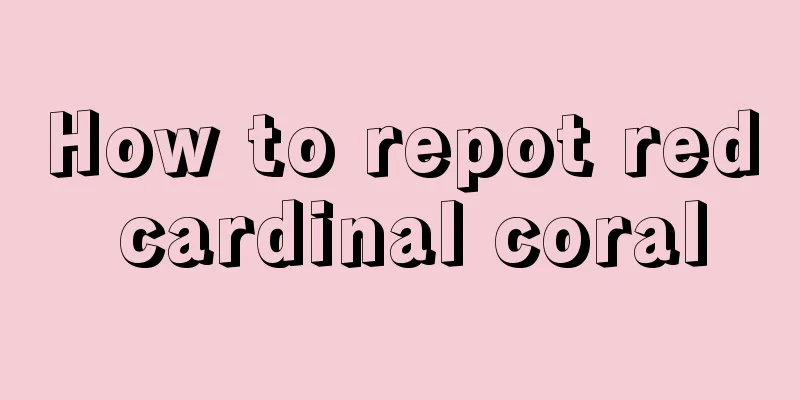Cultivation methods and maintenance matters of old Staghorn Begonia piles

How to grow old Staghorn BegoniaIt is normal for old Staghorn Begonia to become lignified. It can be pruned to give it a different kind of beauty. If you want to grow Staghorn Begonia into an old stump, you must first provide it with sufficient light. Usually, you should put it in a semi-shaded place and receive scattered light, so that the plant can grow vigorously, the stems will accelerate lignification, and the old leaves will fall off more easily. Old stumps of Staghorn Begonia can be dug up in spring. Dig out the old stumps, add fertile peat soil or leaf mold, and the soil mixed with coarse sand, and spray with water slightly. Keep the soil slightly moist during the spring growing season, spray water on the ground more often to increase the environmental humidity. The multi-headed woody old stumps of Staghorn Begonia are about five years old, with a crown width of 17-30 cm, and cost 50 yuan to 100 yuan. Cultivation method of old Staghorn BegoniaOld stumps of Staghorn Begonia are suitable for planting in soil with good air permeability. It should also be allowed to receive as much light as possible every day, and provide shade in summer. It is best to grow it outdoors when the temperature is suitable. Control the amount of watering to maintain basic moisture in the soil. Stop watering during the dormant period. In addition, fertilize once every half a month during the growth period to supplement the nutrients it needs for growth. Pruning old Staghorn BegoniaAfter the Staghorn Begonia grows up, cut off the old leaves remaining at its bottom and keep only the leaves at the top of the branches. This will make it an old stump. After pruning, place it in a cool and ventilated environment to avoid wound infection. After it recovers, you can apply some fertilizer to supplement it with nutrients, which can also make the branches more resilient and prevent the plant from falling over. Pot for old Staghorn BegoniaGenerally speaking, if you want the old Staghorn Begonia to grow well, you have to change to a larger flowerpot. You cannot use a pot smaller than before. In addition, the cultivation soil is also very important. It is best to use loose, fertile and well-drained soil for cultivation. The old stump of Malus serrata sproutsIf you want the old stump of Kaempferia ternata to produce more side buds, let the stump be tilted and remove the leaves underneath. If the light, water and fertilizer are all reasonable, you will generally see buds protruding in about fifteen days. Old stump of Malus serrata grows aerial rootsWhen the old stump of Staghorn Begonia grows aerial roots, you can cut them off and then reduce the air humidity to prevent it from growing aerial roots. The growth of aerial roots may also be caused by root rot. The rotten roots need to be removed in time and then replanted. It is also necessary to increase the light to prevent it from being in a dark environment for a long time. Maintenance of old Staghorn Begonia1. Watering: Staghorn Begonia is a very drought-resistant plant. Usually its leaves will dry and wrinkle when there is a lack of water. It is not too late to water it at this time. If it is kept in a humid environment for a long time, it will easily lead to bacterial growth and even root rot, affecting the normal development of the plant. 2. Temperature: Staghorn Begonia is not cold-resistant. You must keep warm in winter, otherwise it is easy to be frostbitten. Usually the temperature should be controlled above 15℃. If the room temperature is too low, you can build a small transparent film greenhouse or glass greenhouse for the old stump, which can allow the old stump to receive sunlight normally and block the intrusion of cold air. 3. Maintenance: You can use the peels or shells you peel off at home to make organic fertilizer for the maintenance of old succulent plants. You can also buy professional gardening fertilizers and nutrient solutions. When maintaining old succulent plants indoors, you must pay attention to ventilation. Improper ventilation will cause many problems, such as black rot and insects. Do not place succulent plants in an environment that is too dry or too close to a heater. Pictures of old stumps of Malus serrata |
<<: How to save seeds of dianthus
Recommend
What is the best month to plant fragrant flower seeds?
When to plant fragrant flower seeds Fragrant flow...
Can osmanthus be grown indoors? Is it poisonous?
1. You can grow osmanthus indoors 1. Non-toxic: I...
Is Clerodendrum thomsoniae suitable for the bedroom?
1. Is it suitable for the bedroom? The Clerodendr...
How to grow green calyx well
1. Maintenance methods 1. Temperature: Green caly...
Where is Wisteria suitable for growing? Suitable growing environment
Where does Wisteria grow? Wisteria is a sun-lovin...
The correct way to eat papaya, how to eat papaya
1. Eat it raw Pick out a healthy and ripe papaya,...
What to do if the leaves of white orchid turn yellow
reason Excessive water If the amount of watering ...
When is the best time to prune walnut trees?
Walnut Tree Overview Walnut trees have a wide ada...
The efficacy and function of jasmine
The ornamental value of jasmine Forsythia usually...
How to grow pennywort? Is pennywort easy to grow?
1. Suitable soil The requirements of the pennywor...
How to fertilize agave
1. The plant's demand for fertilizer As we ha...
Does bicolor jasmine prefer shade or sun?
Does bicolor jasmine prefer shade or sun? Bicolor...
The breeding method of soft-branch yellow cicada
1. Treatment of plant cuttings Because this plant...
How to grow lucky bamboo to make it more vigorous
Appearance What does a lucky bamboo look like whe...
How to grow Schefflera chinensis to make it overflow the pot
1. Soil suitability If you want the Schefflera to...









